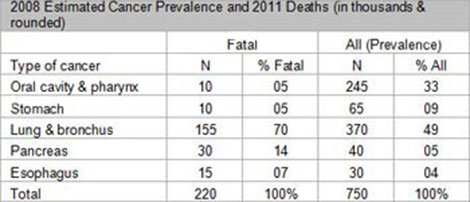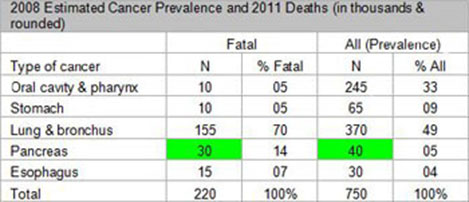Case-fatality (& Vital Stats)
Case-fatalities is just about the easiest topic and, in my opinion, vital statistics questions are not high yield. However, I’ve seen posting (in the forums) about case-fatality questions that show unnecessary confusion and wrong answers. Bottom-line about the common misinterpretation of case-fatalities questions: “All” or “All Cases” or “Total Cases” implies … all cases and that’s the denominator. I explain more below.
Core concepts of Case-fatality
The core concept behind all case-fatality questions, USMLE not withstanding, is: the number of fatalities of a specific illness or condition must be divided by all (“n” or total) observations OF THE SAME specific illness or condition.
Solving / answering high yield Case-fatality questions
Focus on one and only one row; focus on the row of the specific illness or condition being questioned. All other rows are irrelevant AND you will ~never use the percentages (if given) to compute the answer.
Let’s say the question is, “What is the case-fatality rate for pancreatic cancer?”


The answer is 30/40 or, 75%. The two pieces of data you need are highlighted green. That’s it!!! The mistake some students make in the forums is that they add the number of fatalities to the total (“All”). For example, the MISTAKE-ANSWER would look like, 30/70. Here, the denominator (70) double counts the 30 fatalities. The number of fatalities, the number males, number of persons over 50, the number of tall people – or, whatever – are ALL subsets of “All.” “All” is the denominator and the ‘thing’ being asked about, like fatalities, in the numerator. BTW, “All” is analogous to “n” (total population) in the many formulae you’ve seen throughout your education.
Calculating Vital Statistics
Birth, fertility, marriage, and mortality rates, and population growth, are vital statistics: macro measurements that effect a population’s size and composition. They are crude rates when they’re not adjusted for age, ethnicity or some other key demographic qualifier. Assume that the data is of one calendar year; remember that fertility rate’s denominator is of 15-44 year-old women; & remember that data is typically “per 1,000” so answers will look like, “7.9 per 1,000.”
The USMLEbiostats workbook reinforce these concepts and provide commonly-presented word problems with explanations.